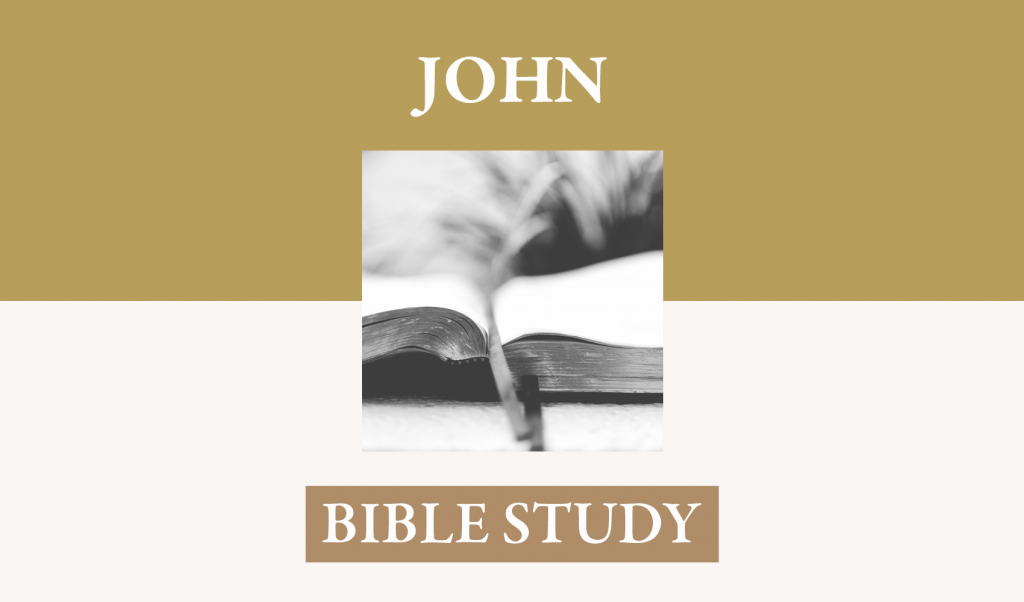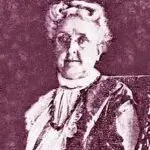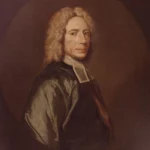Lesson Focus: This lesson is about the simplicity of bringing others to Christ.
Why We Go: John 1:29, 35-39.
[29] The next day he saw Jesus coming toward him, and said, "Behold, the Lamb of God, who takes away the sin of the world! [35] The next day again John was standing with two of his disciples, [36] and he looked at Jesus as he walked by and said, "Behold, the Lamb of God!" [37] The two disciples heard him say this, and they followed Jesus. [38] Jesus turned and saw them following and said to them, "What are you seeking?" And they said to him, "Rabbi" (which means Teacher), "where are you staying?" [39] He said to them, "Come and you will see." So they came and saw where he was staying, and they stayed with him that day, for it was about the tenth hour. [ESV]
[29] This is now the second part of John’s witness. After testifying to the Jewish delegation, John provides direct testimony concerning Jesus. The one glaring omission of the present narrative in comparison with the Synoptics is the account of Jesus’ actual baptism by John. Rather than focus on Jesus’ baptism, the Fourth Evangelist concentrates on the Christological interchange between Jesus and the Baptist. John says that Jesus is the Lamb of God. He is the lamb par excellence. And He is God’s lamb, that is, the lamb especially provided by God for the sins of the world. As is common for characters in this Gospel, the Baptist here speaks better than he knows. For he himself, it appears, merely thinks of the lamb led to the slaughter referred to in Isaiah 53:7, which contemporary Judaism interpreted, not in terms of a dying Messiah, but as substitutionary suffering for sin that fell short of actual death. The evangelist, however, places the Baptist’s declaration into the wider context of his passion narrative, where Jesus is shown to be the ultimate fulfillment of the yearly Passover lamb, whose bones must not be broken. Another possible association is the lamb provided by God for Abraham when he was ready to offer up his son of promise, Isaac, in obedience to the divine command. This is especially suggestive because John 3:16 probably alludes to this scene, highlighting one important difference: what Abraham was spared from doing at the last minute, God actually did – He gave His one and only Son. This Lamb will take away sin, presumably by means of a sacrificial, substitutionary death. Takes away is a present tense with future force, and sin is in the singular, referring to the totality of the world’s sin rather than to a number of individual acts. According to the pattern set by the Old Testament sacrificial system, the shed blood of the substitute covered the sins of others and appeased the divine wrath by way of atonement. As the Book of Hebrews makes clear, however, the entire Old Testament sacrificial system was merely provisional until the coming of Christ. The idea that the Messiah would suffer for the sins of the world, rather than merely for Israel, was foreign to Jewish first-century ears; but John makes clear that Jesus came to save the world and that He is the Savior of the world, not merely Israel. The New Testament’s depiction of Jesus as God’s lamb culminates in Revelation, where Jesus is the lamb who was slain who returns in universal triumph. John’s teaching on Jesus’ substitutionary atonement builds on the evangelist’s earlier reflection on Jesus’ incarnation. For it is in the flesh that Christ suffered vicariously; His humanity was an indispensable prerequisite for His work on the cross on others’ behalf.
[35-37] The present section shows that disciples attach themselves to Jesus as followers for the first time. They do so on the basis of remarkable Christological confessions. Though frequent misunderstanding follows later in the Gospel, the spiritual development of these first followers of Jesus still shows the importance of taking steps of faith in response to one’s present understanding of Jesus. It is not necessary for one to have a full understanding of who Christ is before stepping out in faith to follow Him. Eventually, these disciples realized who He was – the Christ – and joined Him in His suffering. Stepping out of the shadow of the Baptist, Jesus begins His own ministry by calling His first disciples. A comparison with the call narratives in the Synoptic Gospels raises at least two important questions. How is it that in the Fourth Gospel disciples follow Jesus immediately while in the Synoptics they do so only at a later point in time? And why does John’s initial chapter abound with high Christological statements [1:29,34,36,41,45,49] while the Synoptics seem to suggest that the disciples regularly failed to understand Jesus’ true identity? By way of succinct reply: first, the Johannine narrative does not deny earlier encounters but focuses instead on Jesus’ climactic call to discipleship; second, the confessions provide a credible motive why these men would make the dramatic decision to leave everything behind to follow Jesus. As mentioned before, it does not mean that the disciples had a complete or correct understanding of all that these Christological statements meant. Their understanding grew as they sat under the teaching of Jesus. The next day is counted in relation to 1:29. There is a certain progression during the course of the Baptist’s three days of bearing witness to Jesus recorded in this chapter: on the first day, he testified to the Jews [1:19-28]; on the second day, he bore direct witness regarding Jesus [1:29-34]; and on the third day, he pointed his disciples to the Messiah [1:35-51]. Once again, a statement of the Baptist (Lamb of God) is reiterated, presumably to link it even more directly with the commencement of Jesus’ ministry. This statement in verse 36 also effectively marks the end of the Baptist’s significance in redemptive history. All that was left for him to do was make room for Jesus, to decrease [3:30], to leave the scene. Verse 37 establishes the Baptist not only as a crucial witness to Jesus, but also as the initial source from which Jesus drew His followers, further linking their ministries. To recommend disciples to a greater teacher was rare, required great humility and signified confidence in the other teacher’s superiority. The present shift in allegiance from the Baptist to Jesus also illustrates John’s humility and submission to the divine will. Disciples in that day literally followed or walked behind the one they had chosen as their teacher. In John’s Gospel, however, the term gradually moves from this literal to a more figurative sense to denote a following of Jesus’ teaching [e.g. 8:12].
[38-39] As on other occasions, Jesus is asking nothing but a simple question: What are you seeking? Beneath the surface, however, the question is both probing and challenging, and considering both the identity of the questioner and the Fourth Evangelist’s penchant for double meaning, it is hard to believe that the question is not, on a secondary level, meant to challenge also the readers of John’s Gospel to ask themselves what it is they are looking for. Jesus is addressed as Rabbi. The Semitic term rabbi was a common honorific used by disciples to address their teacher. By the end of the first century A.D., the expression had become a technical term for ordained teachers who had satisfied certain formal requirements of rabbinic training. At this point, however, the term was used more generally to refer to a respected Jewish religious teacher, such as Nicodemus [3:10]. The designation is used by Jesus’ first followers [1:38], Nathanael [1:49], Nicodemus [3:2], Jesus’ disciples [4:31; 9:2; 11:8], and the multitudes [6:25]. All four Gospel writers agree that Jesus was first and foremost perceived by his contemporaries as a religious teacher, a rabbi. In first century Palestine, time was counted from sunrise to sunset (i.e., from about 6 am until about 6 pm). Thus, the tenth hour would mean about 4 pm. Because at that point daylight was going to run out before long, people refrained from engaging in major outdoor activities past that hour and began to make preparations for lodging, if necessary.
Whom to Tell: John 1:40-46..
[40] One of the two who heard John speak and followed Jesus was Andrew, Simon Peter’s brother. [41] He first found his own brother Simon and said to him, "We have found the Messiah" (which means Christ). [42] He brought him to Jesus. Jesus looked at him and said, "So you are Simon the son of John? You shall be called Cephas" (which means Peter). [43] The next day Jesus decided to go to Galilee. He found Philip and said to him, "Follow me." [44] Now Philip was from Bethsaida, the city of Andrew and Peter. [45] Philip found Nathanael and said to him, "We have found him of whom Moses in the Law and also the prophets wrote, Jesus of Nazareth, the son of Joseph." [46] Nathanael said to him, "Can anything good come out of Nazareth?" Philip said to him, "Come and see." [ESV]
[40-44] The reference to Andrew as Simon Peter’s brother is in recognition of the fact that Peter would have been more familiar to the readers. Andrew is mentioned elsewhere in this Gospel only in 1:44; 6:8; 12:22. The name of the other disciple is not given. This unusual omission can best be explained if the disciple was John, the evangelist, since he never refers to himself by name in this Gospel. John is the only new Testament author to use the term Messiah. The expression is a transliteration of the Aramaic/Hebrew word meaning “the Anointed One.” In the Old Testament, anointed variously refers to the king of Israel, the high priest, prophets, or others who were set apart for a particular office. The term Messiah is also found in Jewish writings preceding or roughly contemporary with the New Testament, such as the Qumran scrolls and other literature. Jesus’ messiahship is developed further in 1:45 and 1:49. Every time Andrew is mentioned in this Gospel, he is described as bringing or referring someone to Jesus. The word for looked at mirrors the earlier usage with reference to the Baptist in 1:36 and may indicate perceptiveness rather than merely physical sight. Last names as are used today were not in existence in biblical times. Instead, a person was known by who his or her father was and/or by place of origin. Also, in ancient cultures a name was thought to signify the personality of an individual. Cephas, used only here in the Gospels but several times in Paul, is an Aramaic word meaning “rock.” In Old Testament times, God frequently changed people’s names to indicate their special calling. Giving someone a new name demonstrated authority. Rabbis in Jesus’ day likewise occasionally gave characteristic names to their disciples. Jesus’ renaming of Simon Peter is therefore in keeping with both biblical and rabbinic precedents. The evangelist adds that the translation of Cephas is Peter. Peter does not appear to have been a proper name in ancient times. It may have been used by Jesus as a nickname indicating Peter’s strength of character and future role in the church. Not that Peter is worthy of such a name in himself; rather, the new name is in anticipation of the new man whom God would someday create. The focus instead is on Jesus as the one who intimately knows people and so calls them that He makes them what He calls them to be. In keeping with His supernatural knowledge displayed at other junctures, Jesus foresaw what the future held for Peter and their relationship. The next day is now the fourth day in the week of Jesus’ early ministry selected by the evangelist. Finding Philip, Jesus called him by saying, Follow me. Jesus’ practice of calling His followers ran counter to the contemporary practice whereby disciples opted to attach themselves to a rabbi of their choice. Mark seems to indicate that Andrew and Peter were from Capernaum; here in John they are said to be from Bethsaida. Most likely, Andrew and Peter grew up in Bethsaida and subsequently moved to Capernaum, which is only a few miles directly west of Bethsaida. After Jerusalem and Capernaum, Bethsaida is the most frequently mentioned city in the Gospels, and Jesus probably spent a significant amount of time there.
[45-46] The pattern is the same as that in 1:41: a declaration that someone has found the Messiah and the bringing of another to Jesus. The plural we have found indicates that Philip had associated himself with the fledgling group of Jesus’ followers. Nathanael is mentioned also in 21:2 as one of the seven disciples to whom Jesus appears on the shore of the Sea of Galilee. Since the name Nathanael is not mentioned in the Synoptics, it is likely that this was the personal name of Bartholomew, who is linked with Philip in all three Synoptic apostolic lists, yet is not mentioned in John’s Gospel. The Law and the prophets was a common Jewish designation for the Hebrew Scriptures in their entirety. Philip had come to believe that Jesus was the Messiah foretold in the Scriptures, both in the law and in the prophets. Here, Jesus is said to be from Nazareth, and the son of Joseph. Though born in Bethlehem, Jesus grew up in Nazareth, so that He could properly be said to be from Nazareth. People knew Him as the son of Joseph, even though He had been conceived in Mary’s womb through the Holy Spirit and existed with God from all eternity. In any case, this would have been too early for Philip to know about the virgin birth. Especially in light of the fact that the Pharisees use the same designation (Son of Joseph)to discredit Jesus [6:42], this is another instance of Johannine irony. It is ironic that Nathanael, himself from the small village of Cana in Galilee, here displays such prejudice against the relatively insignificant Galilean town of Nazareth. There may be several reasons for his skepticism. First, there was Nazareth’s insignificance. Mentioned neither in the Old Testament nor in Josephus, Nazareth was a small town of no more than two thousand people, located about 3.5 miles southeast of the regional capital, Sepphoris. Second, not only was Nazareth inconspicuous, but also people did not envision the Messiah as coming from Galilee. Third, some also think that there was a rivalry between the small cities of Nazareth and Cana. Finally, Nathanael, unlike some of Jesus’ other early followers, probably had not benefited from the Baptist’s testimony. In any case, Nathanael represents in this Gospel a type of the skeptical but honest Jewish person who will require some evidence and convincing before believing in Jesus. In regard to Philip’s response to Nathanael’s skepticism, he does not debate the skeptic, but instead he invites him to examine firsthand the veracity of his claim. Though Philip may be unable to answer Nathanael’s question, Jesus will provide the needed correction and instruction. What is more, the evangelist proceeds to answer Nathanael’s question even more extensively in the remainder of his Gospel. Vicariously, the invitation to Come and see is extended to every reader of John’s Gospel, then as well as now. It underscores the importance of eyewitness testimony and of a firsthand knowledge and personal relationship with Jesus. Seeing, together with finding and knowing, part and parcel of the Johannine witness motif, relates to witnessing the revelation of God offered by Jesus. The invitation to come and see also implies an offer to go and find out together.
What Results: John 1:49-51.
[49] Nathanael answered him, "Rabbi, you are the Son of God! You are the King of Israel!" [50] Jesus answered him, "Because I said to you, ‘I saw you under the fig tree,’ do you believe? You will see greater things than these." [51] And he said to him, "Truly, truly, I say to you, you will see heaven opened, and the angels of God ascending and descending on the Son of Man."
Son of God … King of Israel are messianic titles that are equivalent in nature. There is no reason to believe that Nathanael’s apparent glowing confession reveals greater insight than do previous confessions by disciples. Still, since Nathanael is himself an Israelite, he is affirming Jesus as his own king as well as that of his nation. Specifically, by attaching to Jesus the label Son of God, Nathanael identifies Him as the Messiah predicted in the Old Testament. Likewise, King of Israel was a common designation for the Messiah. Because of the expression’s political overtones, however, Jesus was reluctant to identify Himself in such terms, for His kingdom was not of this world [18:36]. Jesus’ response to Nathanael’s confession is vintage Jesus, serving notice that this confession does not fully encompass all who Jesus is as the Messiah. Though the disciples have seen Jesus, they have still more to experience and comprehend beyond Jesus’ foreknowledge of events. The statement, You will see greater things than these, serves as a summation of the previous interaction [1:35-49], as well as dramatically anticipating what is to follow in the remainder of the narrative. Jesus is emphatic that His revelation to Nathanael was due to His being the apocalyptic Son of Man, who has come as a human being from transcendent origins in order to complete His mission and who will return to earth in the last days to serve as the end-time judge. In the Old Testament, the term (Truly, truly) confirms the truthfulness of someone’s else’s statement. Jesus, on the other hand, uses the expression to assert the trustworthiness and importance of His own sayings. To see heaven opened is to receive a vision of otherworldly realities. What Jesus claims is that He is that Son of Man prophesied in Daniel, the one who has seen God and given a full account of Him, the one who was lifted up at the cross, and the one who will return in all His glory. The picture in verse 51 is drawn from Jacob’s vision of the ladder in Genesis 28:12. As the angels ascended and descended on Jacob, so the disciples are promised further divine confirmation of Jesus’ messianic identity. When Jacob awoke from his dream, he exclaimed, How awesome is this place. This is none other than the house of God and this is the gate of heaven [Gen. 28:17]; and Jacob called that place Bethel, which means “house of God.” Thus Jesus is saying that He is this house of God and gate of heaven; He is the one who opens heaven to mankind. The present reference is one of several in John’s Gospel to greater things to come. In 5:20, Jesus maintains that the Father will show greater works than these referring to His participation in the final judgment. In 14:12, Jesus predicts that believers after His death will do greater works than these … because I am going to the Father. These pronouncements raise expectations for the reader of John’s Gospel as they continue to follow John’s narrative. In the present case, the greater things that Jesus promises to Nathanael are bound up with greater revelation, which is the meaning of heaven opened. Specifically, these revelations of God’s glory in Christ will be seen in the ever-escalating series of signs performed by Jesus. Perhaps significantly, the pronouncement is made to Nathanael of Cana in Galilee, the site of Jesus’ first and third “signs” framing John 2-4, the first major ministry portion of Jesus narrated in this Gospel. Yet according to the evangelist, an even greater revelation of the divine glory than Jesus’ signs – spectacular as those may be – can be found at the cross.
Questions for Discussion:
1. What do we learn about the character of John the Baptist in 1:29-39?
2. What a wonderful answer Philip gives the skeptical Nathanael: Come and see. Think about how you can use that type of answer in your witnessing.
3. In these verses, Jesus is given several titles: Lamb of God, Rabbi, Messiah, Son of God, King of Israel, Son of Man. Give the meaning of each of these terms. Why do you think that Jesus chooses Son of Man as the title He gives Himself?
References:
John, Robert Mounce, EBC, Zondervan.
John, Andreas Kostenberger, ECNT, Baker.
John, Leon Morris, Eerdmans.

















